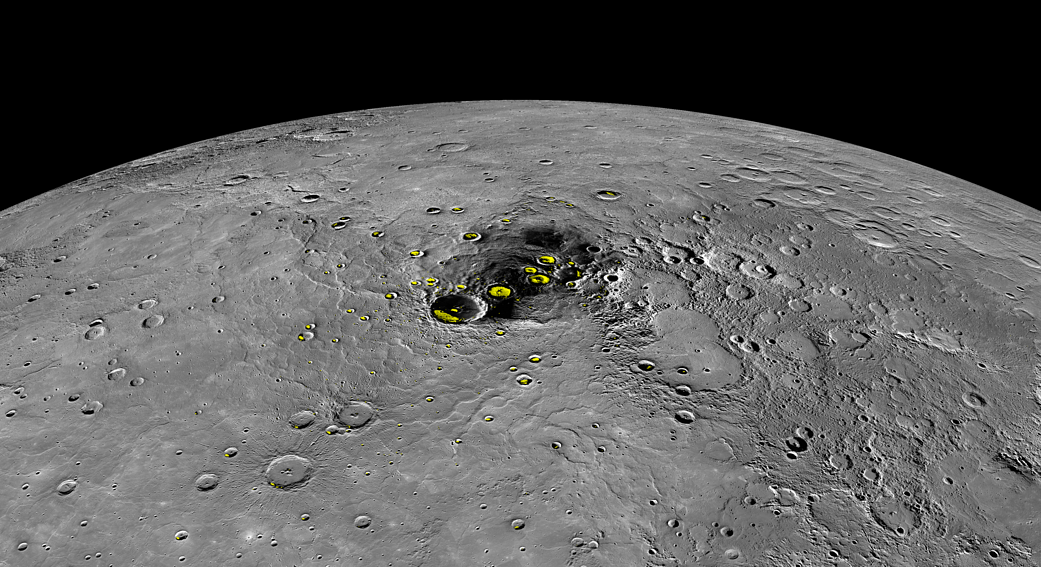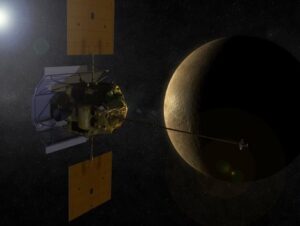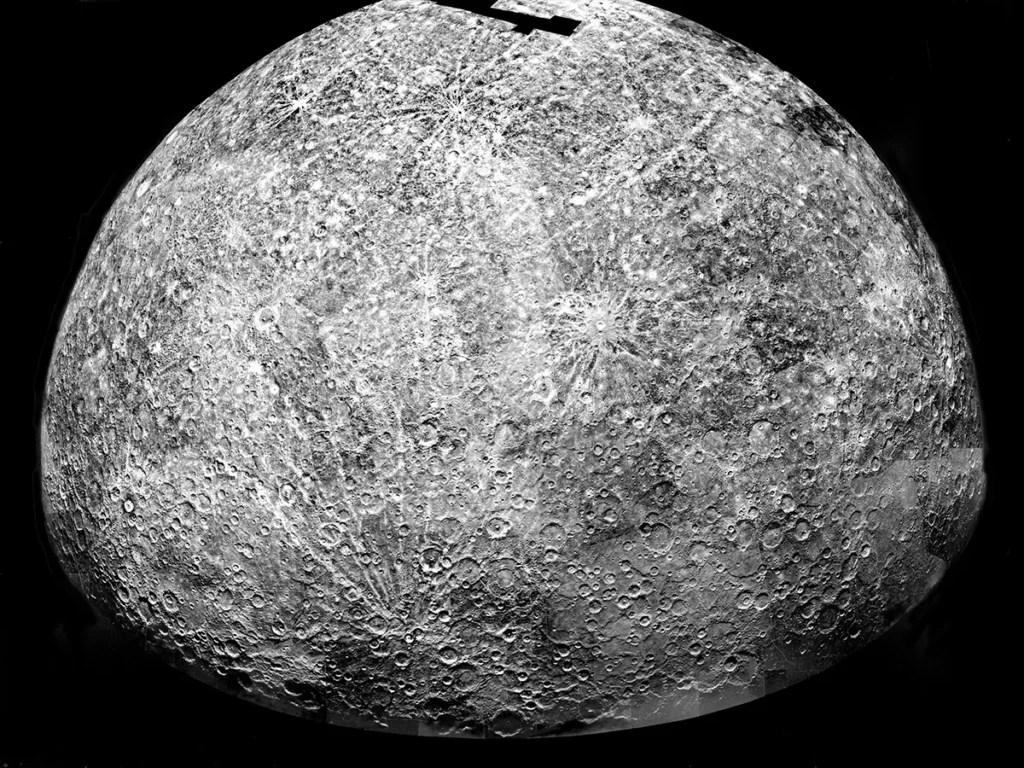Mercury has held a special fascination for me since I was a kid gazing up at star charts. It seemed less like a planet and more like a mysterious force, zipping around the heart of our solar system. Turns out, my instincts were right. If you’re looking for fascinating facts about Mercury, you’ve come to the right place! This tiny world is a land of extremes, hidden complexities, and clues to the wider story of how planets form and evolve.
The Essential Facts About Mercury
- Mercury is the smallest planet in our solar system, with a diameter of approximately 4,880 km.
- It orbits the Sun at an average distance of about 58 million kilometers.
- Mercury’s surface comprises 70% metallic materials and 30% silicates.
- The planet’s atmosphere is extremely thin, composed primarily of oxygen, sodium, hydrogen, helium, and potassium.
- Mercury’s day is approximately 176 Earth days long, while its year is only 88 Earth days long.
- NASA’s MESSENGER mission provided unprecedented insights into Mercury’s geology, magnetosphere, and atmosphere.
- The European Space Agency’s BepiColombo mission is set to launch in 2018 and arrive at Mercury in 2025.
The Weird and Wonderful Side of Mercury

Mercury, the smallest and closest planet to the Sun, is a world of extremes, with unique features and conditions that continue to captivate scientists and the public alike. From its diminutive size and metallic composition to its extreme temperatures and unusual day-night cycle, Mercury presents a multitude of challenges and opportunities for exploration and scientific discovery.
Hollows
Thousands of mysterious depressions on the surface of Mercury, ranging in size from 60 feet to over a mile across and depths of 80 feet or more, have puzzled scientists since the 1970s. No one knows how they got there. These hollows are not like craters, which are formed by impacts from asteroids or comets. Instead, they seem to be a result of some other geological process, possibly related to the planet’s internal structure or the effects of solar wind on the surface.
Magnetic Tornadoes
Mercury’s magnetic field interacts with the solar wind, generating magnetic tornadoes that channel fast, hot, solar wind plasma to the surface of the planet. This phenomenon is unique to Mercury and is not seen on other planets. The magnetic tornadoes are thought to be responsible for the strange “tails” of particles that are seen streaming off the surface of the planet.
Weird Terrain
The antipodal point of the Caloris impact basin, which is partially in sunlight, has a unique geological structure that is different from other areas of Mercury. This region is known as the “Weird Terrain” and is characterized by a series of strange, irregularly shaped features that are not seen elsewhere on the planet.
Surface Ice
Water ice has been found in permanently shadowed craters near the poles of Mercury, which could potentially support life. This is a significant discovery, as it suggests that there may be conditions on Mercury that are suitable for life to exist.
Giant Asteroid Impact Survivor
Mercury is one of the few planets in the solar system that has survived a giant asteroid impact without being destroyed. The Caloris Basin, which is one of the largest impact craters on the planet, is a testament to the planet’s ability to withstand massive impacts.
Bizarre Orbit
Mercury’s orbit is unique in that it is not a perfect circle. The planet’s orbit is elliptical, which means that its distance from the Sun varies throughout the year. This elliptical orbit is thought to be the result of the gravitational pull of other planets in the solar system.
Enormous Iron Core
Mercury has an enormous iron core, which is thought to be responsible for the planet’s strong magnetic field. The iron core is about 1,500 kilometers in diameter, which is much larger than the cores of other planets in the solar system.
The Thinnest Atmosphere in the Solar System
Mercury has the thinnest atmosphere of any planet in the solar system. The atmosphere is so thin that scientists have another name for it — an exosphere. Mercury’s exosphere is composed mostly of oxygen, sodium, hydrogen, helium, and potassium, according to NASA.
Weird ‘Tails’
Scientists have discovered that Mercury has streams of particles sloughing off its surface, much like a comet. Long-exposure photographs taken by astrophotographers on Earth can capture these curious tails, as detailed in an article from EarthSky.
Largest Temperature Fluctuations in the Solar System
Mercury has the largest temperature fluctuations in the solar system, with temperatures ranging from -173°C to 427°C. This is due to the planet’s proximity to the Sun and its lack of atmosphere, which means that there is no heat to trap or retain.
The Smallest Planet in the Solar System
Mercury is the smallest planet in the solar system, with a diameter of approximately 4,880 kilometers. It is also the closest planet to the Sun, with an average distance of about 58 million kilometers.
Its Entire Surface Has Been Mapped
NASA’s MESSENGER probe (short for Mercury Surface, Space Environment, Geochemistry, and Ranging mission), orbited Mercury for more than four years and beamed back some amazing images of the closest planet to the sun. Scientists used those images to create the first-ever complete map of Mercury’s surface.
Exploring Mercury: A Challenge and a Triumph

Mercury, nestled deep within the Sun’s powerful gravity well, presents unique hurdles to exploration. Missions to this small world must overcome:
- Intense Solar Radiation: Spacecraft venturing near Mercury face a bombardment of solar radiation far stronger than what Earth-orbiting probes experience. This requires special heat shielding and careful electronics design to avoid damage.
- The Sun’s Gravity: Entering orbit around Mercury is no simple feat. Spacecraft must either carry large amounts of fuel for braking maneuvers or utilize complex gravity assist trajectories involving flybys of other planets to finally be captured by Mercury’s weak gravity.
- Extreme Temperatures: Equipment sent to Mercury must be engineered to endure both scorching heat on the sunlit side and frigid temperatures in the permanent shadows of craters … sometimes within mere miles of each other!
The Missions that Dared
- Mariner 10: The Pioneer: In the 1970s, NASA’s Mariner 10 made history as the first spacecraft to visit Mercury. While a flyby mission (not an orbiter), it conducted three close passes, mapping roughly 45% of the planet’s surface and revealing a heavily cratered, Moon-like world. Mariner 10 also made the surprising discovery of Mercury’s magnetic field, suggesting a partially molten core.
- MESSENGER: Diving Deeper: After Mariner 10, decades passed before another spacecraft journeyed to Mercury. NASA’s MESSENGER mission (2011-2015) was a game-changer, becoming the first to achieve orbit around Mercury. MESSENGER’s wealth of data included:
- Detailed global surface mapping that unveiled evidence of past volcanic activity
- Confirmation of water ice deposits in polar craters
- In-depth analysis of Mercury’s unusual composition and its thin exosphere
- Discoveries about Mercury’s unique magnetic field dynamics
- BepiColombo: The Next Chapter: Building on MESSENGER’s discoveries, the European Space Agency and Japan Aerospace Exploration Agency teamed up for BepiColombo. Launched in 2018, this ambitious mission consists of two orbiters designed for complementary studies of Mercury. BepiColombo’s goals include:
- Mapping Mercury in multiple wavelengths for detailed surface analysis
- Studying the planet’s magnetosphere and its interaction with the solar wind
- Closer investigation of Mercury’s polar ice deposits
- Seeking clues about the mystery of Mercury’s massive core
The Future of Mercury Exploration
Missions like BepiColombo continue to push the boundaries of our understanding. Yet, numerous questions remain. Some scientists propose potential future missions that could include:
- Landers: Delivering landers to the surface, especially near the icy poles, would allow for direct sampling of surface composition.
- Dedicated Core Studies: Missions focused on probing Mercury’s massive core could utilize advanced seismology or magnetic field measurements to unravel the mysteries of its formation.
As technology advances, the potential for future discoveries is thrilling. Understanding Mercury is essential not only to know our own solar system intimately, but to piece together the broader puzzle of planetary formation and evolution across the universe.
ALSO READ: Top 10 Most Fascinating Exoplanets Ever Discovered… Will they Reveal Life’s Secrets?
Conclusion
Mercury has held a strange fascination for me ever since I was a kid. From its blazing surface temperatures to hidden pockets of ice, its extremes challenge our assumptions about planets. That slow spin, the shrinking surface, and the giant metal heart all point to a unique and perhaps violent history. With every mission – Mariner 10, MESSENGER, and now BepiColombo – we peel back another layer of mystery.
The story of Mercury is far from finished. Future discoveries might unlock the secrets of its core or reveal more about how it acquired water and perhaps the building blocks for life. Learning about Mercury sparks my wonder and reminds me of the incredible diversity the universe holds. Let’s keep exploring together, not just this fascinating little planet, but the whole wide Universe!!
If you’ve found yourself intrigued by Mercury’s extremes, or if learning about it sparked a new interest in our solar system, share this article with your friends, continue to learn about the universe with the space vortex and also let us know thoughts in the comments below! Let’s keep the sense of exploration alive together.
FAQ Your Mercury Questions Answered

- Q: Is Mercury the hottest planet?
- A: No! While Mercury is incredibly hot due to its closeness to the Sun, Venus actually holds the title of hottest planet. This is because its dense atmosphere traps immense heat through a runaway greenhouse effect.
- Q: How can Mercury have ice if it’s so hot?
- A: Mercury’s surface temperature swings wildly, and within craters near its poles, there are areas permanently shielded from sunlight. In these eternally shadowed craters, temperatures stay low enough for ice to persist!
- Q: Why is Mercury’s day longer than its year?
- A: Mercury rotates very slowly on its axis, taking roughly 59 Earth days to complete one spin. However, it orbits the Sun very quickly – in just 88 Earth days! This unusual combination makes a day longer than its year.
- Q: Why is Mercury’s core so big?
- A: Scientists aren’t entirely sure, but the leading theory is that a massive impact early in the solar system’s history stripped away much of Mercury’s outer layers, leaving the unusually large core behind.
- Q: Could humans ever live on Mercury?
- A: Unfortunately, no. Mercury’s extreme temperatures, lack of a substantial atmosphere, and close proximity to the Sun make it far too hostile an environment for human survival.
- Q: What are the characteristics of Mercury?
- A: Mercury is the smallest planet in our solar system, slightly larger than Earth’s Moon. It’s a rocky world with a huge iron core, has extreme temperature swings, a very thin atmosphere, and a heavily cratered surface.
- Q: What would it be like to live on Mercury?
- A: Living on Mercury would be impossible for humans. The extreme temperatures – scorching hot during the day and freezing at night – the lack of breathable atmosphere, and the intense solar radiation create a deadly environment.
- Q: Does Mercury have water on its surface?
- A: Mercury doesn’t have liquid water on its surface due to the extreme heat. However, surprisingly, it has water ice hidden in permanently shadowed craters near its poles.
- Q: What is Mercury known for?
- A: Mercury is famous for several things:
- Being the smallest planet in our solar system.
- Its extremely fast orbit around the Sun.
- Wild temperature differences between day and night.
- Having a surprisingly large metallic core.
- A: Mercury is famous for several things:
- Q: What color is Mercury?
- A: Mercury appears primarily dark gray. Its rocky surface is covered in dust, which doesn’t reflect a wide range of colors.
- Q: How many moons does Mercury have?
- A: Mercury has no moons. It’s too small and too close to the Sun to hold onto a moon for long.
- Q: How far is Mercury from the Sun?
- A: Mercury’s average distance from the Sun is about 58 million kilometers (36 million miles). That makes it the closest planet to our star.
- Q: When was Mercury discovered?
- A: Mercury has been known since ancient times, with recorded observations dating back to at least the 14th century BC. It’s impossible to pin down a single discoverer.
- Q: Why is Venus hotter than Mercury?
- A: Venus, although further from the Sun, is hotter than Mercury due to its thick, carbon dioxide-rich atmosphere, which traps heat through a runaway greenhouse effect.
- Q: What does the Sun look like from Mercury?
- A: The Sun would appear much larger and brighter from Mercury than it does from Earth. At its closest (perihelion), the Sun would look about three times bigger!
